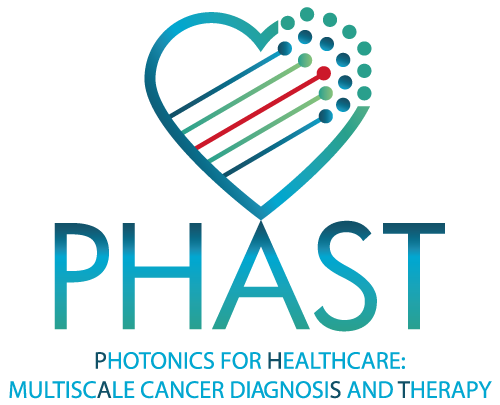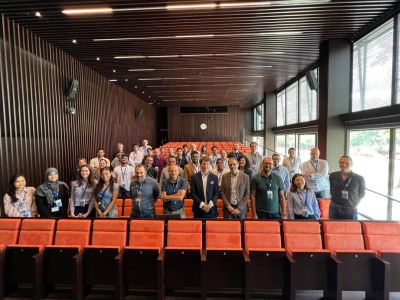Read more
PROJECT
The European Training Network PHAST (Photonics for Healthcare: multiscAle cancer diagnosiS and Therapy) provides excellent, highly-skilled education and training in the vibrant field of Biophotonics for 15 Early Stage Researchers (ESRs) which will be enrolled in a strong multidisciplinary PhD programme.
PHAST addresses some relevant unmet needs of the medical community in prevention, diagnosis and treatment of cancer (one of the leading causes of death worldwide) to significantly improve the quality of life for European society. The ESRs (PhD students) will be trained to all the technologies through hands-on laboratory platforms, thematic workshops and courses to build solid careers as biophotonics professionals in both academic and nonacademic sectors.
This will be possible thanks to the multidisciplinary environment created by the PHAST consortium, composed of research institutions, 2 hospitals and 8 industries from 7 European Countries, among them specialized small companies as well as global players in the field such as Horiba, Philips and Zeiss.
PHAST addresses some relevant unmet needs of the medical community in prevention, diagnosis and treatment of cancer (one of the leading causes of death worldwide) to significantly improve the quality of life for European society. The ESRs (PhD students) will be trained to all the technologies through hands-on laboratory platforms, thematic workshops and courses to build solid careers as biophotonics professionals in both academic and nonacademic sectors.
This will be possible thanks to the multidisciplinary environment created by the PHAST consortium, composed of research institutions, 2 hospitals and 8 industries from 7 European Countries, among them specialized small companies as well as global players in the field such as Horiba, Philips and Zeiss.

The objectives of the PHAST-ETN Action aim at developing advanced photonics solutions for:
1.
IN-VITRO DIAGNOSIS
as point-of-care approach through optical spectroscopy in combination with innovative sampling techniques;
2.
TISSUE DIAGNOSTICS AND FUNCTIONAL MONITORING
through optical fibre based biopsy and diffuse optical spectroscopy;
3.
MICROSCALE CANCER MONITORING
through multimodal optical imaging of tumour borders during surgery;
4.
MACROSCALE THERAPY EFFECTIVENESS MONITORING
by diffuse optical spectroscopy, multifunctional optical fibre sensors, and autofluorescence and hyperspectral imaging.
Stay in touch
subscribe to our newsletter service


